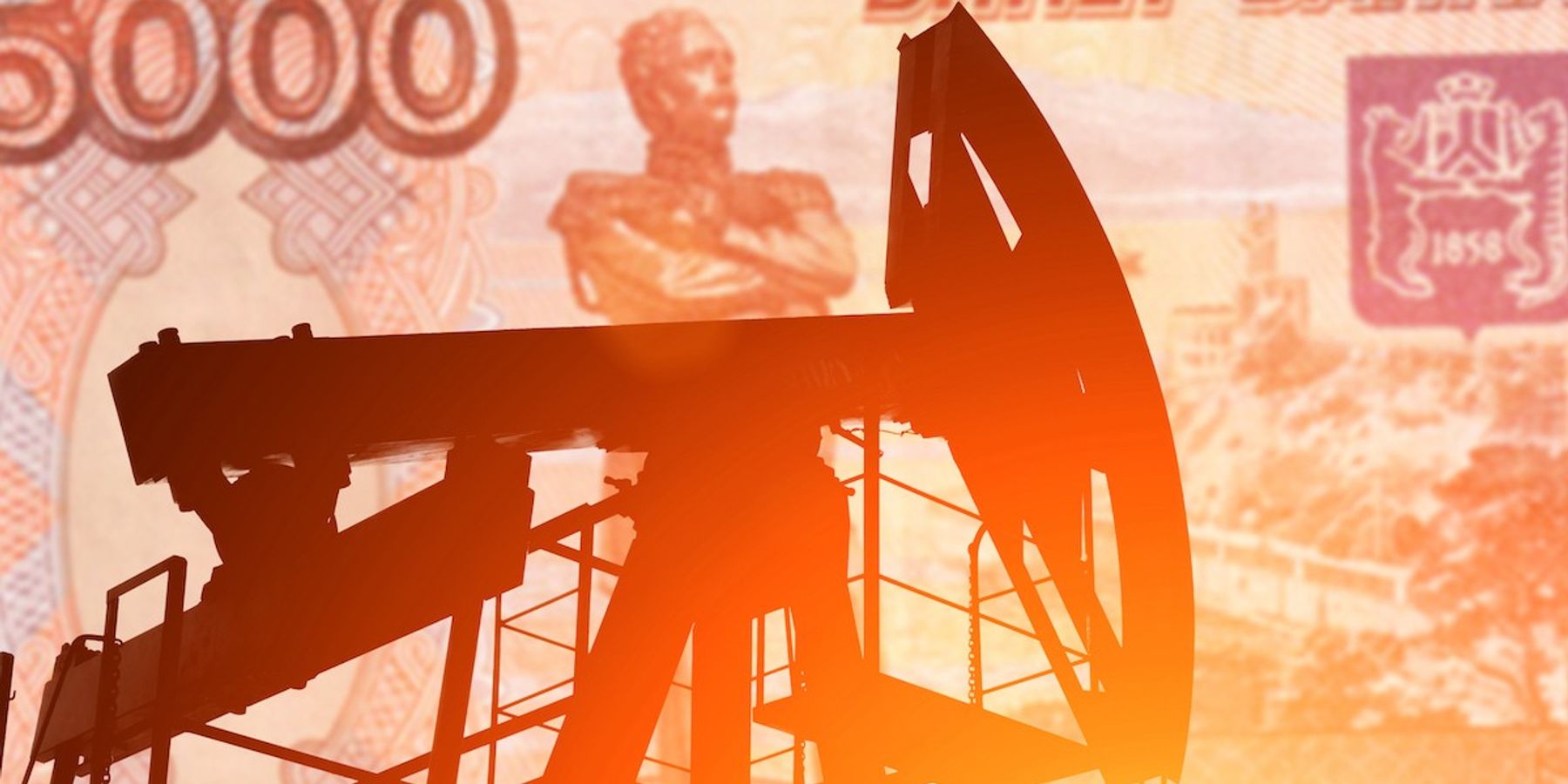Robin Brooks, a Senior Fellow at the Brookings Institute, took to X recently to declare that "there needs to be a ban on any academic papers that interpret Russia’s resilient GDP as a sign that sanctions aren’t working." I found it remarkable that he should acknowledge the unexpected resilience of Russia’s economy yet try to disbar analysis which might suggest, therefore, that sanctions had failed.
Brooks produces some interesting analysis, and at the heart of his statement lies an important argument that others have taken up recently: that Western powers didn’t impose tough enough sanctions on Russia at the start of the Ukraine crisis, but could still impose such a catastrophic economic cost on Russia that Putin will, for the first time, be forced to back down.
Let’s take a look at what a maximum pressure policy in 2014 might have involved.
Putting a complete block on the import of Russian oil and gas has always been the go-to sanctions target for Western pundits. Russian goods exports in 2014 amounted to almost $500 billion. With over two thirds of those exports oil and gas, and the EU accounting for most trade, a total ban would have blown a $200 billion hole in Russian exporters. It would also have opened a gaping hole in state finances as roughly one half of Russian state revenue comes from taxes levied on oil and gas. This would undoubtedly have limited Russia’s ability to continue massive investment in its military which had been ongoing since 2011.
However, this would have also had catastrophic consequences for energy security in many parts of Europe, including in countries that received 100% of their gas from Russia such as Finland, the Baltic States, and Bulgaria. Germany at that time received 40% of its gas from Russia. That would have caused energy shortages, huge energy inflation and cost of living challenges, with the EU still locked in a cycle of low growth, low productivity, and negative interest rates following the global financial crisis.
Of course, European countries may simply have accelerated their move away from Russian energy, but this process wouldn’t have happened overnight. President Obama only lifted the 40-year U.S. ban on oil and gas exports in December 2015, which ushered in a rapid rise in U.S. liquefied natural gas exports to Europe in particular.
The gradual shift to higher cost U.S. LNG has had massive political and economic consequences in Germany which is suffering from deindustrialization. Its governing coalition just collapsed due to a rise in far right and far left populist populism amid the economic fallout. A much more extreme version of the political earthquakes we are witnessing today in Europe would simply have happened sooner had the West imposed a full blockade on Russian energy in 2014.
Another idea from that time was to cut Russia off from SWIFT — or the Society for Worldwide Interbank Financial Telecommunications. According to the Financial times, cutting Russia off from SWIFT would render Russia unable to transact export business in foreign currencies at all. This would have devastated Russia’s export dependent economy. It would have bankrupted state-owned companies like Rosneft, Gazprom and Rostec, as Western financial sector sanctions had already induced serious liquidity problems, in particular at oil giant Rosneft. Without export earnings, its biggest state firms going under, Russia would have been unable to build up its reserves to underwrite the huge cost of a war which it launched in 2022.
However, cutting Russia off from SWIFT is also what Bloomberg described as the economic version of Mutually Assured Destruction, at least for Europe. European importers would have struggled to pay for Russian imports (see my comments above on the impact of losing access to Russian energy). They also would have been unable to receive payments for exports to Russia, therefore cutting them off from a huge market.
EU companies exported $100 billion worth of goods to Russia in 2014. EU political leaders were never going to sign up for this.
In 2014-2015 Russia had refrained from a full-scale invasion of Ukraine because it wanted to try to retain reasonably good relations with France and Germany — and the Minsk Agreement seemed to offer the chance of this. Even hawkish UK foreign policy makers in Whitehall described a move on SWIFT as the “nuclear option”; so devastating that it might tip Putin towards heeding his most hawkish advisors and invading Ukraine (or worse) — at a time when Ukraine was vastly less able to resist than it was in 2022.
Freezing Russia’s international reserve assets in 2014 might theoretically have been more damaging then than it was in 2022. Russia in late 2014 was reeling from the November oil price collapse. The Central Bank vainly hosed $100 billion in reserves at the foreign exchange markets in the run up to the Black Tuesday rouble meltdown of December 16, 2014. Had Russian assets already been frozen, Russia’s central bank may have been unable to prevent an even more devastating currency collapse.
But I remain skeptical that this would have made a significant difference to Russian policy in Ukraine. Even after Black Tuesday, Russia retained available reserves of $400 billion. Had the West frozen assets in their jurisdictions of around $200 billion, Russia could still have covered eight months of imports. What Russian policy makers learned from Black Tuesday was that a weak ruble was a strength, in increasing the ruble value of oil and gas exports which were traded in U.S. dollars.
Quite unrelated to Western sanctions, Russia embraced a weak ruble as an article of economic policy, a point few pro-sanctions/pro-war advocates in the West seem to appreciate. That allowed Russia, as I’ve said many times before, to rebuild its reserves ahead of the war in 2022. Seizing Russian assets in 2014 may simply have accelerated that process and emboldened Russia to war sooner.
I was at the front line of imposing sanctions on Russia for 10 years, yet I have never believed that a tougher line on sanctions in 2014 would either have prevented war in Ukraine or been politically and economically deliverable in Europe.
I recognize the frustration that commentators feel about the ineffectiveness of sanctions. It’s always important to remember that any foreign policy needs a clear goal and measures of success. The purpose and justification for sanctions against Russia has or should have been to limit, halt and/or reverse aggression against Ukraine. Damaging Russia’s economy, even though that hasn’t happened in a way analysts like Brooks would have hoped, is not the yardstick against which we should be measuring sanctions.
Putin has said he would like sanctions relief as part of a possible future peace deal, but sanctions have at no point over the past eleven years looked likely to constrain his decision making.
Suggesting new ways to inflict economic pain on Russia is therefore missing the point. We should be asking how we can end the war, rather than suggesting the same old ideas that will undoubtedly prolong it.
- Why US-led sanctions on Russia are a failure ›
- Shifting goals cloud utility of sanctions on Russia ›
- Russia sanctions are stone cold leverage. Let's use it. | Responsible Statecraft ›
















